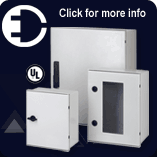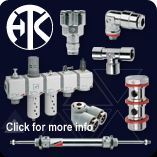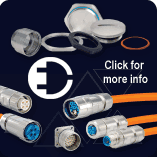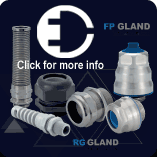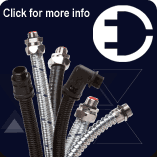|
Fundamental requirements
The cables and insulated wires shall be of adequate safety for proper use in the intended manner such
that these do not constitute any unacceptable risk to life or damage to property. The prevention of danger
to persons and property during usage and storage of operating equipment means safety to include the
detection of stress, risk and potential faults, as well as their rectification or a limitation to a minimum risk level.
Unless otherwise specified, cables and insulated wires should only be used for the conductance and distribution of electricity.
General requirements
The choice in the selection of cables and insulated wires should be such that the voltages and currents prevailing in the operating equipment, a system or device used shall meet all operating conditions to be
expected.
The cables shall be constructed, installed, protected, used and maintained to prevent danger as far as it is reasonably practical.
Limiting conditions
The limiting conditions in the DIN VDE and HD specifications shall be taken into account. An acceptable service life will be attained by compliance with the limiting conditions, depending on the circuit designed
under defined conditions for use. The usable life of a permanently installed cable for power distribution is longer than that of flexible cable.
The influence by all of the factors given in the following sections must be considered as an interrelationship and not on an individual basis.
Selection of cables and insulated wires
The choice in the selection of cables and insulated wires shall be made such that these are suitable for the operating conditions as well as for all other external influences and compliance with the respective
protection class.
- Operating conditions are, for example:
- voltage
- protective measures
- grouping of cables
- current
- method of installation
- accessibility
- External influences are, for example:
- ambient temperature
- presence of rain, water vapor or the accumulation of water
- presence of corrosive, contaminating or other chemical substances
- mechanical stresses (such as holes or sharp edges from metal constructions)
- animal world (such as rodents)
- plant world (such as fungal growths)
- irradiation (such as sunlight).
Note: The color black provides a higher degree of protection than other colors.
Requirements for fixed installation
In the normal case, cables for permanent installation have solid single wire or stranded conductors. In certain circumstances, e.g. for greater ease of installation, the conductor may be Class 5 according to HD
383 or DIN VDE 0295.
Cables should not be in contact with, or close to, hot surfaces if the cables are not intended for such conditions.
Cables should not be buried directly in the earth and should be fastened by a suitable means while making allowance for the maximum spacing between fixing points.
The cable should not be damaged by any mechanical restraint used for its support. Cables which have been in use over longer periods of time may become damaged by movement. This can be caused by the natural
effects of ageing on the physical properties of the materials used for the insulation sheath and jacket which can become brittle with time.
For flexible applications
Flexible cables are made up conductors consisting of multiplicity of small wires and are either stranded or bunched.
These cables meet either Class 5 or Class 6 of HD 383 and DIN VDE 0295.
Flexible cables should be used for connections to mobile operating equipment. The length of the connecting cable must be chosen such that response by the short-circuit protecting device is assured.
The cable length should be as short as is needed for the practical application so as to reduce the risk of mechanical damage. In cases of applications where flexible PVC-sheathed cables are permissible, the use
of spiral cables can be considered for shortening the effective length.
Flexible PVC-jacket cables are not necessarily suitable for processing further to spiral cables. Multi conductor control cables shall be protected against permanent bending stress. Abrasion, notches and sharp
bends are to be avoided.
Except for cables for connections to permanently installed operating equipment, flexible cables should not be permanently fixed (with the exception of heavy-duty cable designs for permanent installation in
temporary facilities) unless these are contained in an enclosure affording mechanical protection. For a fixed installation, at least one cable should be used for “normal” stress.
Flexible cables should not be subjected to excessive straining from tensile forces, compression, twisting or kicking. This applies in particular at the point of entry into the device, and strain relief or the
point of connection to the fixed wiring. These should not be damaged by any strain relief or clamping device at points to the permanent installation.
Flexible cables should not be placed under floor coverings or carpets because there is the danger that this can cause thermal insulating effects, leading to increased temperatures, or that the weight of furniture
from traffic can damage the cables.
Flexible cables should neither be in contact with, or close to, hot surfaces nor extend into the immediate vicinity of such, as they are not suitable for this purpose.
On account of their characteristics, this also applies in particular for PVC-sheathed and/or jacketed cables. The suitability of flexible cables for outdoor applications, either for short periods or continuous
operation, is defined in the tables of the HD 516 and in DIN VDE Part 300.
Flexible PVC-sheathed cables are not suitable for permanent use in outdoor applications.
The types of structures for PVC-jacket cables for short-term use in outdoor applications should not be operated in conditions others than these, e.g. at temperatures lower than the specified temperature.
Cables without a jacket may neither be used as a substitute for a jacketed cable nor as an extension cable. These shall principally not be used for connecting Class 2 equipment unless the cable in the
constructional standard has been defined as a cable for extra light duty and the equipment standard explicitly permits this cable type.
The corresponding VDE and HD regulations shall be observed for the cables used in deep mining operations, in quarrying as well as for moveable equipment, such as in cranes with spring-loaded reeling devices for
example.
Voltage
The rated voltage for a cable is the reference voltage for which the cable is designed and which serves to define the electrical testing requirements.
The rated voltage is expressed as the ratio of two values, U0 /U, whereby U0 is the effective value (r.m.s.) of the voltage between any insulated conductor and the “earth” (metal
covering of the cable or surrounding medium)
U is the effective value (r.m.s.) between any two phase conductors of a multi conductor cable or of a system of single conductor cables. In an alternating current system, the rated voltage of a cable shall be at
least equal to the nominal voltage to the value U0 and U. In direct current system, the rated voltage of the system shall not be higher than 1.5 times that of the nominal voltage of the cable.
Note: The operating voltage of a system may permanently exceed the rated voltage for the cable by 10 %.
Current carrying capacity
The nominal cross-section of each conductor should be selected such that the current carrying capacity is not less than the maximum continuous current that flows through the conductor under normal conditions of
operation. The limiting temperature with respect to the current carrying capacity should not be exceeded for the cable insulation and sheath concerned.
Included in the defined conditions is also the method of installation for the cable used. The regulations for the permissible current rating shall be observed here for the current.
Correction factors may also be included in the values given for the load rating to allow for other conditions, such as for example:
1. cable grouping
2. type of over current protection
3. ambient temperature
4. reeled / drummed cables
5. thermal insulation
6. frequency of the current (if other than 50 Hz)
7. effects of harmonic waves
Serious damage can be caused if cables are operated for longer periods of time above those limits given in the tables and can lead to early failure or considerable deterioration in the cable characteristics.
Thermal influences
Cables should be selected, located and installed so that the intended heat dissipation is not inhibited and they do not present a fire hazard to adjacent materials.
The limiting temperatures for the individual cables are given separately in our catalogue. Under no circumstances may these values be exceeded by an interaction of internal joulean heat (to the material of the
cable, connections and terminals) by the ambient conditions.
Mechanical stress
Allowance shall be made for all possible mechanical stress that can arise during a normal installation process for laying cable in order to assess the risk of mechanical damage to cables.
Tension
The following values for tension should not be exceeded for each conductor in use. This applies up to a maximum value of 1000 N for the tensile stress of all conductors unless European has approved limits
deviating from this value.
50 N/mm² by permanent operation for fixed installation.
15 N/mm² for flexible cables under static tension for fixed installation that are used in current circuits.
It is recommended for those cases where the above values are exceeded, that a separate strain-relieving element or similar protection should be used. The connection of such a strain-relieving element to the cable
shall be made such that the cable is not damaged.
If flexible cables are subjected to dynamic tensile stress (including those due to the mass inertia, e.g. for reeling drums), the permissible tension or the fatigue life should be agreed between the user and
European.
Notes for cables which are installed vertically, without any intermediate support, can be found in DIN VDE 0298 part 300 and HD 516 S2, item 5.4.1, and Table 6.
Bending stress
The internal bending radius of a cable should be chosen such that the cable is not damaged by this.
The internal bending radii are given in Table 6 of HD 516 S2 and DIN VDE 0298 part 300.
The choice of bending radii smaller than specified shall be concurred with European.
Attention shall be given when stripping the insulation that the conductor is not damaged by this as the bending characteristics will otherwise seriously deteriorate.
The bending radius given apply for ambient temperatures of (20 ±10)°C. The recommendations from European shall be enquired for ambient temperatures other than those given.
For flexible cables and cords, particularly at terminations and at the point of entry of moveable appliances, it may be necessary to use a device which ensures that the cable is not bent to an internal bending
radius less than that specified in Table 6 of HD 516 S2 and DIN VDE 0298 part 300.
Bending too close to any internal and/or external anchorage shall be avoided.
Kink-protection sleeves or other devices shall not impede the movement of the conductors within the cable.
Compression
Cables shall not be compressed an extent that this will damage the cable.
Torsion stress
In general, flexible cables are not designed for torsion stress. In those cases where such torsion stress cannot be avoided, then the design of the cable and the installation arrangements should be agreed between
user and European.
Compatibility
The following points shall be considered in the selection and installation of cables:
- The avoidance of interference mechanical and electrical influences between adjacent circuits.
- Dissipation of heat from cables, or the chemical/physical influences from the materials used for the cables on bordering materials, such as for example, constructional and decorative materials, insulation
tubes, supports, etc.
- Mutual interference by adjacent materials and the materials used for the cables. This applies for instance, for an absorption of plasticizer from PVC-sheathed cables by certain materials that are used for
thermal insulation purposes, for strapping materials or for the equipment.
Dynamic stress
The possibility should be taken into consideration of damage to cables and fastenings for these, by the dynamic forces that can be caused by any current including short-circuit currents.
Storage/Handling/Transportation
Cables that are not intended for outdoor applications should be stored in dry indoor environments. A number of constructional types of flexible cables are particularly susceptible to moisture, such as screened
cables for example.
The ends of the cables should be sealed for the application and the expected duration of outdoor storage in order to prevent the penetration of moisture. The temperatures given in the tables in HD 516 S2 for
storage shall be taken into account.
If the temperature of the cable falls below recommended values, then all types of mechanical stresses, in particular vibrations, shock, impact, bending and torsion twist shall be avoided.
|












